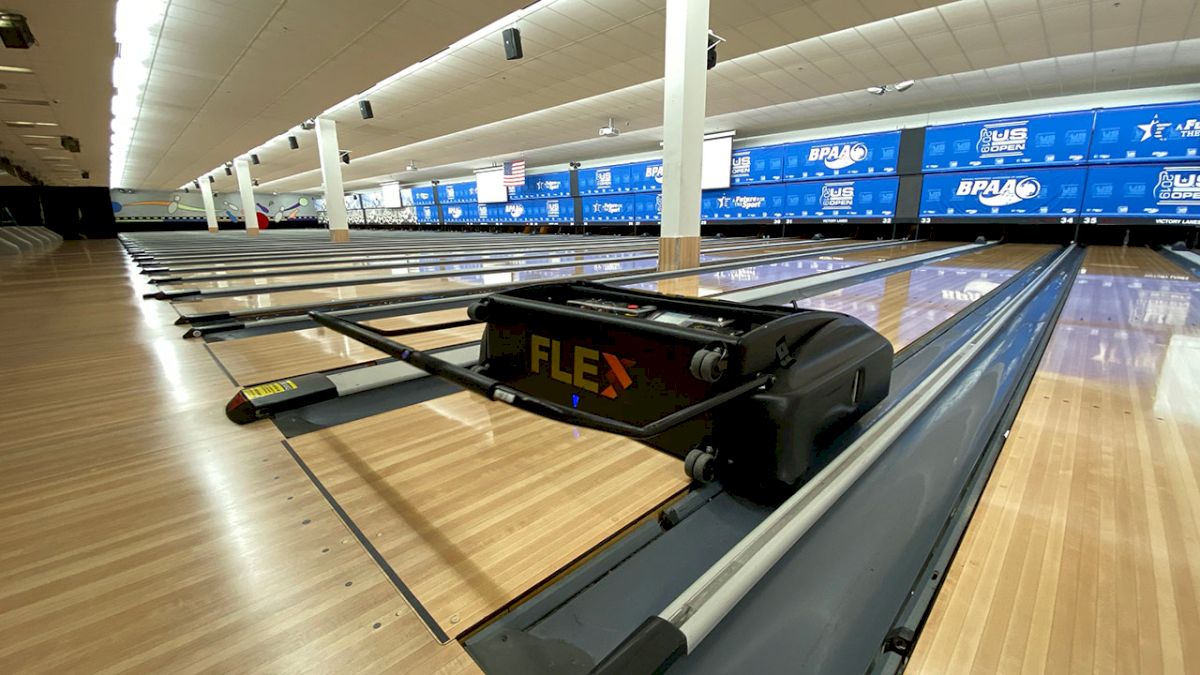A Look At The U.S. Open Lane Patterns
A Look At The U.S. Open Lane Patterns
The U.S. Open will feature four lane conditions to challenge the players over the course of the event.

The 2019 U.S. Open, which begins Friday at 8 a.m. Eastern live on FloBowling, features four oil patterns that are not announced until 30 minutes before each practice session.
Normally at PBA Tour events and some majors, players are notified well in advance of the pattern(s) and can prepare for what’s to come. But at the U.S. Open, players have to figure out the conditions with the equipment they have with them.
It’s what it makes the U.S. Open challenging and one of the most difficult majors on the schedule. Here is a breakdown of the 4 patterns the players will be facing this week.
Pattern #1: 45 Feet, 27.25mL, 1:1
The first pattern will greet the players with a sight that all players will initially know the scores will be low, a perfectly flat 1:1 ratio pattern.
In addition to the medium volume and 45-foot length, the longest in qualifying this week, this pattern will force players to keep angles tight and a bit deeper to start. But once the traffic from other players come into effect, the natural move for all was to keep moving further left.
The lane surface here does hook a lot and the front part of the lane is going away quick forcing players left early. Some players were testing the outside but due to less traffic on the outside and the 1:1 ratio, your target is going to be microscopic as well as unpredictable as more bowlers swing the lane and affect ball motion down lane.
The move got so far left that a number of players were lofting the gutter 10 feet, some even 20 feet, down lane toward the end of the practice session to help control the pocket. You are going to see a lot of bowling balls taking flight during the first day of qualifying on Friday.
Watch Michael Tang and Darren Tang break down their strategy for Pattern 1.
Pattern #2: 41 Feet, 29.93mL, 1:1.73 Right / 1:1.37 Left
Pattern No. 2 was more favorable to the players than Pattern No. 1 but was still challenging with the higher volume and low ratio.
There were many players playing on the outside part of the lane with urethane. Playing deeper was an option but since the lane surface does hook a lot here at Victory Lanes, it can be easy to get trapped with the higher concentration of oil in the middle of the lane. Smooth ball control and ball motion is key to keep the pocket in play.
Watch Stu Williams and Francois Lavoie break down their strategy for Pattern 2.
Pattern #3: 37 Feet, 27.5 mL, 1:1.98
This is the shortest pattern of the three main qualifying patterns. A strong mixture of resin and urethane was thrown a lot with urethane keeping the ball in play more.
Toward the end of the session, a lot of players migrated left to find more oil as fronts went away. With the breakpoint furthest right due to the length, the ball will be making deep moves in the oil to make it back from such a far angle to the pocket.
Proper ball motion, ball speed, and rotation off the spot will help these players have good pin carry and avoid splits on this tough condition.
Watch Brad Miller and Kyle Sherman break down their strategy for Pattern 3.
Pattern #4: 40 Feet, 30 mL, 1:1.62
This pattern will be bowled on during the Round of 36, match play and stepladder finals that will be on Monday through Wednesday.
There was a one hour optional session Thursday night that only a handful of bowlers used to fine tune their equipment for their ball check in as well as getting in their last-minute shots.
The heavier volume and less ball traffic will not see much transition so angles will more than likely be straighter.
Overall thoughts
With all of these patterns being less than 2:1, the lane surface will be dictating a lot of choices these bowlers will have to make.
In addition, the breakdown of these pairs with a mixture of urethane and resin being thrown will make the scoring pace low and as always with the U.S. Open, spare shooting will be paramount to these players.
And with a grueling eight-game block ahead of them, which will be much longer than their 90-minute practice session today, the conditions will change constantly. Pair to pair will play different and for the players the goal is to keep the ball in play, take any strike you can get and limit your errors as much as possible.
Welcome to the U.S. Open!